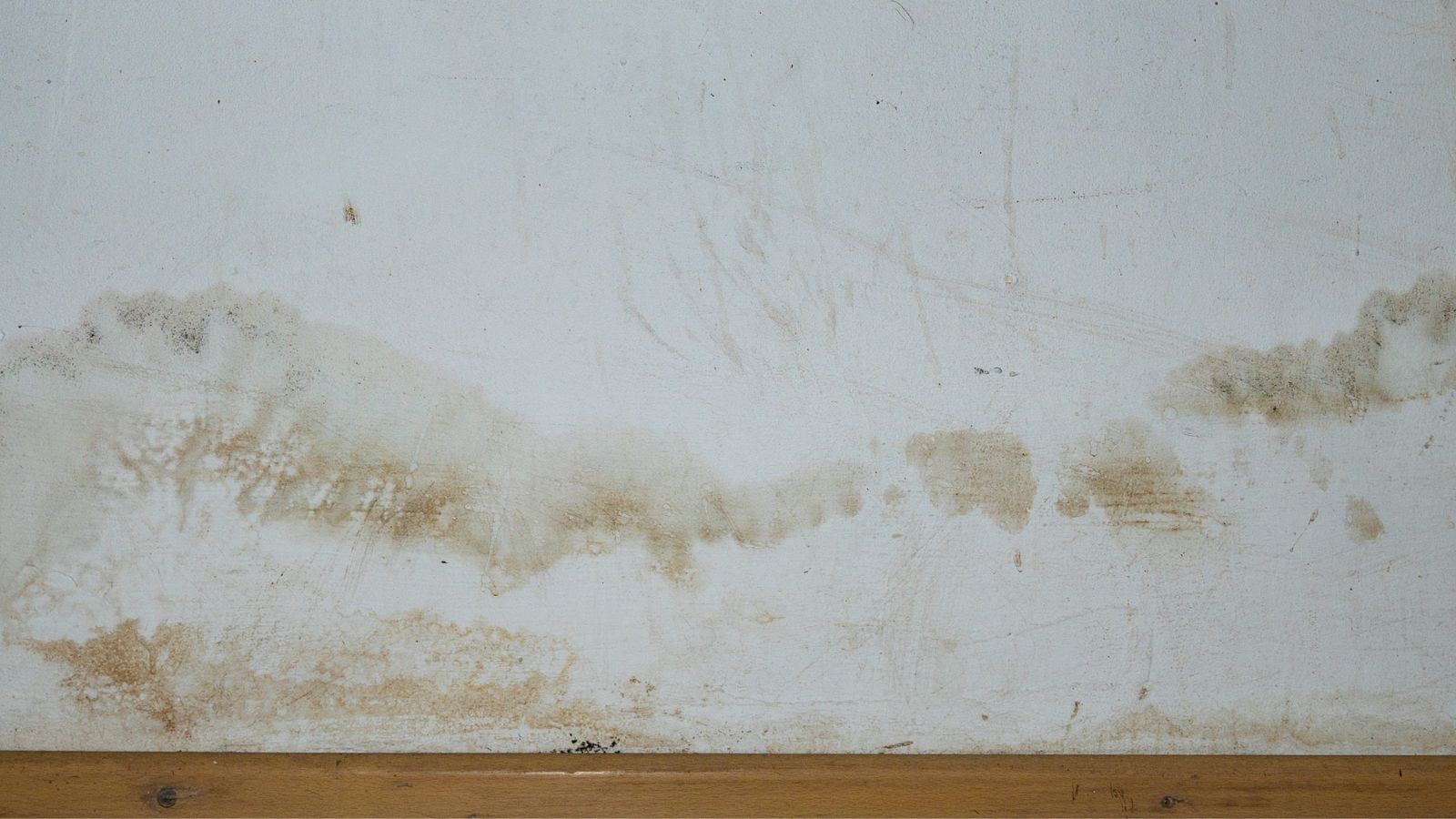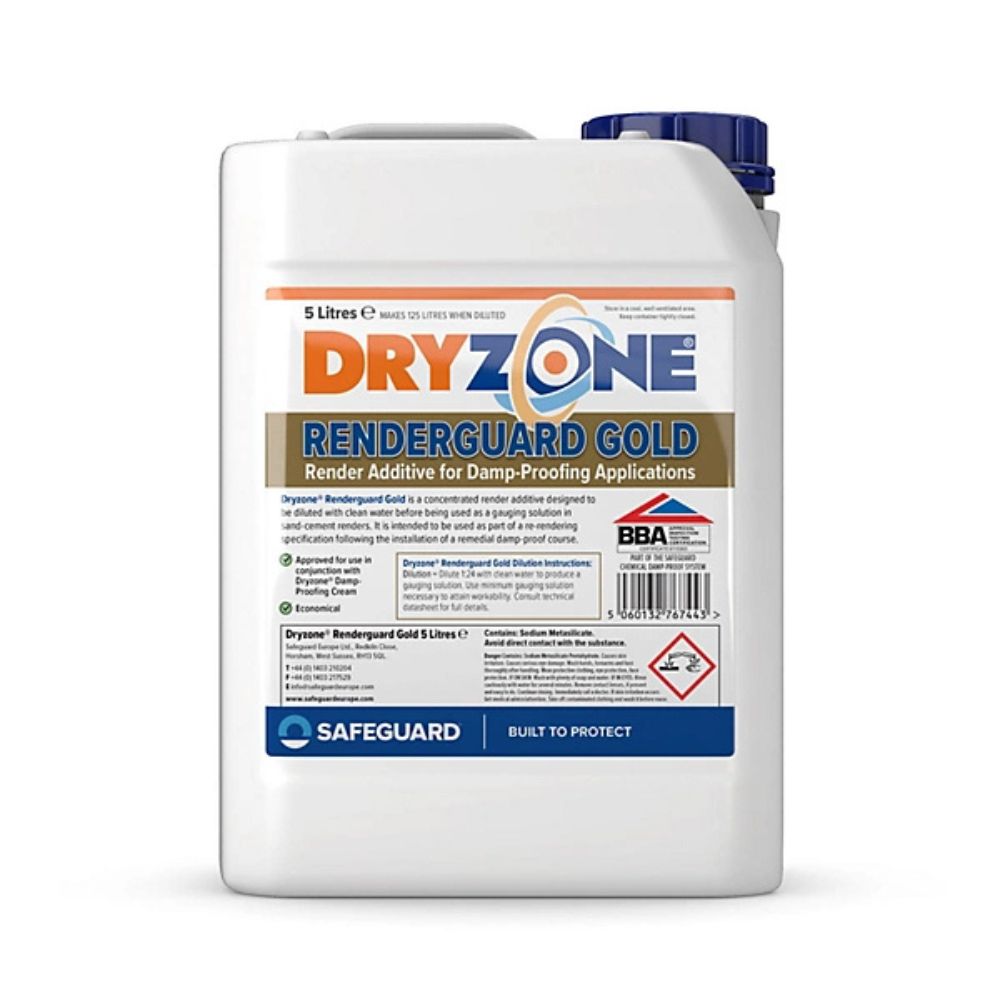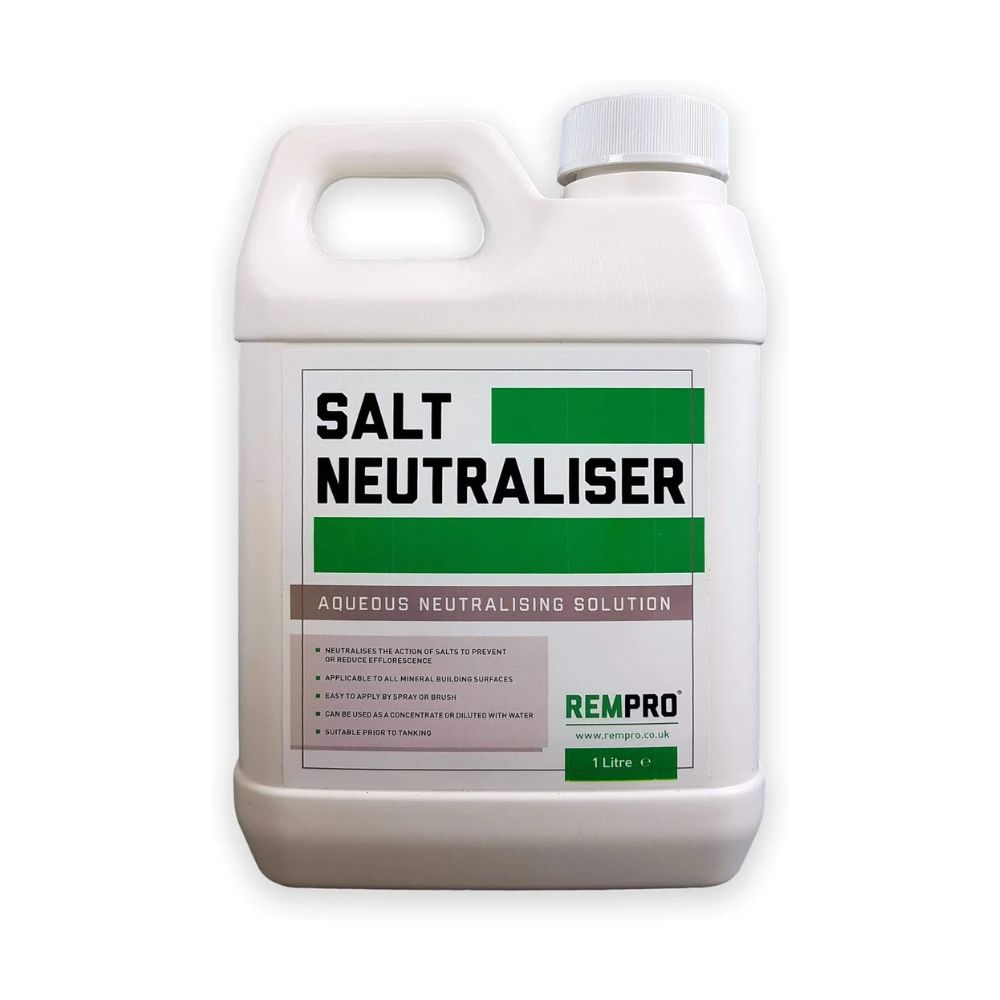That white line on your wall isn’t mould, it’s salt banding — here's how to treat it
Think that white, fluffy line on your wall is mould? It may actually be salt banding. Here’s what causes it and how to fix it before the damage spreads

The first time you encounter salt banding on a damp wall, it’s easy to mistake it for mould – and in fairness, mould often follows soon after if the issue isn’t addressed. But salt banding is actually the result of salts being drawn up through the wall and deposited in a neat, horizontal line as the moisture evaporates.
It's a common side-effect of rising damp and one that tends to linger long after the original moisture issue has supposedly been fixed. What makes salt banding particularly frustrating is that it behaves differently from ordinary damp patches or mould. The surface might look sound but still feel damp to the touch, and any attempt to redecorate usually ends in bubbling paint or plaster that won’t quite settle.
Below, we break down what salt banding actually is, why it forms, how to tell it apart from other types of damp damage, and the correct way to use a salt neutraliser so the problem doesn’t return.
What is salt banding on a damp wall?

Salt banding is the horizontal line that appears on a wall affected by rising damp, created as moisture draws salts up through the masonry. Jess Thomas, managing director of Drainage Central, explains that it’s “the visible line that indicates how high rising damp has reached,” formed by salts accumulating in the wall fabric. These salts remain active and continue to absorb moisture, keeping the surface damp even after the original problem is fixed.
Barrie Francis, damp and timber specialist at Timberwise adds that this band is caused by hygroscopic salts – mainly chlorides and nitrates – which are left behind as the wall dries out. These salts pull moisture from the air, so the wall may always appear damp at the same height. In some cases, they can absorb enough moisture to dissolve into a liquid, known as deliquescence.
This is distinct from efflorescent salts, which Barrie describes as the small, white crystals commonly seen on drying masonry. These are not usually hygroscopic and can often be brushed away, whereas salt banding requires targeted treatment.

Jess Thomas is the managing director of Drainage Central, and an expert in the drainage and plumbing industry. Jess continually provides valuable insights on a wide range of industry topics, and is dedicated to helping homeowners find effective solutions to their drainage problems.

Barrie Francis is a damp and timber specialist at Timberwise, advising homeowners on rising damp, salt contamination and long-term moisture control, with decades of experience in property preservation.
What causes salt banding on a damp wall?
According to Jess Thomas, salt banding typically happens when a damp proof course (DPCs) is damaged or missing, allowing ground moisture to travel freely through the masonry. As the wall dries, the salts naturally concentrate at the point where the moisture stops, which is why the band appears in a clean, horizontal line.
Bring your dream home to life with expert advice, how to guides and design inspiration. Sign up for our newsletter and get two free tickets to a Homebuilding & Renovating Show near you.
Barrie Francis explains that this is the “peak of the capillary rise,” and it’s here that salts settle during the drying process. Their presence becomes obvious when they begin absorbing moisture from the air, creating a persistent damp-looking strip on the surface.
In essence, the cause is twofold: unwanted moisture rising through the wall, and the salts left behind as that moisture evaporates.
How to tell salt banding apart from mould or damp staining
Salt banding has a few clear markers that set it apart from other types of damp damage. Jess Thomas notes that it appears as “a visible band or line of discolouration,” usually close to ground level or around areas where moisture has seeped in. The surface may still feel damp, but the paint often remains intact – unlike many types of mould, which tend to disrupt the finish and spread in uneven clusters.
Mould shows up as irregular spots rather than a straight, horizontal line, and is typically linked to poor ventilation and high humidity. Damp staining, meanwhile, is any water-related mark that disappears once the underlying moisture issue has been sorted.
If the line appears consistent, low on the wall, and sometimes slightly powdery or fluffy, it’s far more likely to be salt banding than mould or basic staining, and it won’t clear without targeted treatment.
Should you treat salt banding before decorating or replastering?
Treating salts before you attempt any decorating or replastering is essential, as they can prevent new finishes from bonding properly. Jess Thomas explains that if salts remain active in the wall, “fresh paint will blister, crack, peel or flake as the salt pushes it from the wall.” Because these salts continue to absorb moisture from the air, the surface never truly dries, leaving paint and plaster struggling to stabilise.
Barrie Francis cautions that the existing plaster often needs to be removed altogether, and he recommends stripping it back “300mm beyond the last visible signs of dampness,” as hygroscopic salts can sit deeper within the building fabric and reappear even after surface treatments. Skipping this step usually results in the same damage returning, which is why proper salt treatment is just as important as addressing the cause of damp.
How to use salt neutraliser on salt banding
Salt neutraliser is a specialist chemical treatment designed to react with the salts in your wall and stop them drawing in moisture. As Jess Thomas explains, it “penetrates into the wall and reacts with the salts to neutralise them,” and can also help form a barrier against future salt banding on the same surface.
Used correctly, it creates a more stable base for plaster or paint. Here’s how to apply it properly:
1. Prepare the wall
- Brush away any loose, fluffy or powdery salt deposits.
- Remove any flaking paint or obviously loose plaster.
- Soak the affected area with clean water so the neutraliser can penetrate more evenly.
2. Protect yourself and the space
- Neutraliser can cause burns if mishandled, so wear gloves, eye protection and suitable clothing.
- Make sure the room is well ventilated and cover floors and nearby finishes with dust sheets or plastic.
3. Test a discreet area first
- Test the salt neutraliser by applying it to a small, inconspicuous patch.
- Allow it to react fully and check for any unexpected discolouration or surface change before committing to the whole wall.
4. Apply the salt neutraliser
- Follow the product instructions for dilution and coverage, then use a brush to work it evenly into the surface.
- Don’t be alarmed if you see some frothing. This is normal and simply indicates the neutraliser reacting with the salts.
5. Allow time for it to work
- Leave the neutraliser on the wall for the full period recommended by the manufacturer.
- Avoid cutting this time short, as incomplete neutralisation can allow salts to remain active and potentially reappear down the line.
6. Wash down the surface and let the wall dry fully
- Once the reaction time has passed, wash the treated area with clean water to remove any residue.
- Do not paint, skim or replaster until the wall has completely dried.
- Use gentle ventilation and background heating rather than trying to force-dry the surface.
When won't salt neutralisers work?
Salt neutraliser is not a cure-all, particularly where rising damp has been at play for a long time. Barrie Francis stresses that in these cases, the plaster itself is often contaminated with hygroscopic salts and the plaster should be removed altogether.
In severe or long-standing cases of salt banding, especially on walls with a failed or missing damp proof course, you may be looking at:
- Installation or repair of a damp proof course (often via chemical injection).
- Full removal of salt-contaminated plaster to the recommended height.
- Replastering with a suitable damp-resistant specification, potentially alongside the use of a salt neutraliser.
In other words, salt neutraliser works best as part of a wider damp remediation strategy, not as a shortcut in place of fixing the underlying moisture source and replacing heavily contaminated plaster.
Essential products for combatting damp and salt banding
FAQs
Is salt banding always a sign of rising damp?
Not always, but it’s one of the most common causes. Salt banding usually indicates that moisture has travelled up through the wall, bringing salts with it. If you’re unsure whether rising damp is still active, a specialist can carry out moisture and salt testing to confirm and provide advice on how to treat damp in a specific area.
How long does salt neutraliser take to work?
This depends on the specific product, but most require a set reaction period, which is usually a few hours. It’s important to leave it undisturbed for the full time recommended on the packaging so the neutralising process can complete properly.
Can I paint straight over an area treated with salt neutraliser?
No. The wall must be washed down after treatment and allowed to dry completely before you apply paint, plaster or skim coat. Decorating too soon can trap moisture and cause the same problems to reappear.
Will salt banding come back after treatment?
If the underlying moisture issue has been fixed and the salts have been neutralised or removed, the band shouldn’t return. However, if the damp proof course is still compromised, or if salt-contaminated plaster hasn’t been removed where necessary, you may see persistent patches.
Is salt banding harmful?
The salts themselves aren’t harmful, but the damp conditions they create can lead to structural issues, damage to your paintwork, and eventually mould growth if the wall never dries properly. Treating the salts is always recommended if you want to prevent further damage to your home.
For lighter surface issues or general condensation on walls, simple tools like the best dehumidifiers can make a real difference. When in doubt, don't be afraid to contact a damp specialist, as this may prevent more serious, structural damage to your home later on.

Gabriella is an interiors journalist and has a wealth of experience creating interiors and renovation content. She was Homebuilding & Renovating's former Assistant Editor as well as the former Head of Solved at sister brand Homes & Gardens, where she wrote and edited content addressing key renovation, DIY and interior questions.
She’s spent the past decade crafting copy for interiors publications, award-winning architects, and leading UK homeware brands. She also served as the Content Manager for the ethical homeware brand Nkuku.
Gabriella is a DIY enthusiast and a lover of all things interior design. She has a particular passion for historic buildings and listed properties, and she is currently in the process of renovating a Grade II-listed Victorian coach house in the West Country.



